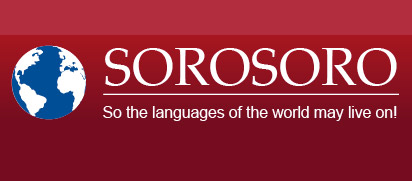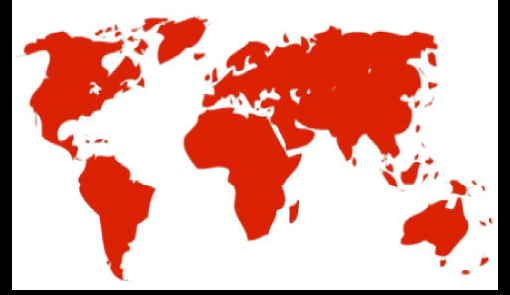Print  |
|

Turoyo
Page by Jean Sibille, 2011.
Data on the Turoyo language
Classification: African-Asian family, group of Semitic languages, Western Aramaic branch.
Turoyo is one of the modern languages originating from the western branch of Aramaic, Semitic language belonging to the group of Semitic languages of the North-West along with Hebrew and a certain amount of dead languages such as Phoenician, Amorite, Canaan and Ugaritic.
Alternative names:
Turani (in Arabic)
The term Surayt (which is a variation of Suret) may refer to Turoyo but also to Sureth (or Neo-Aramaic of the North-East).
Suryoyo may refer to Turoyo but also to Syriac, also called Ktovonoyo “language of books”.
Main dialects:
There’s a certain degree of variation within Turoyo. The dialects spoken in different villages are different from one another but are mutually understandable. The dominant dialect is Midyat. Within the Diaspora, many speakers use a mixture of the language from their village and Midyat.
Mlahso, which used to be spoken in the villages of Mlahso and ‘Ansha near Diyarbakır, a hundred kilometres to the North-West of Tur-Adbin, is a distinctive but quite close form of Turoyo. Both villages were destroyed in 1915 during the Armenian genocide. A few speakers remained in the 90’s of the 20th century in the town of Qamishli in Syria.
Geographic area: Turkey, especially in the area of Tur-Abdin (“Mountain of God’s servants”). There are also speakers in the cities of Qamishli and Hassaka in Syria, and in the Diaspora, notably in Sweden, Denmark, the Netherlands, Germany, Switzerland and Belgium. In France, there are Turoyo speakers on the outskirts of Paris, such as Montfermeil (93) and in the towns of Lyon and Marseille.
Number of speakers: According to the UNESCO, there would be approximately 50,000 Turoyo speakers.
Status of the language: No official status.
Media and television:
In Sweden, a TV channel of the Assuryamn-Chaldean-Syriac Diaspora, SouroyoTV, is broadcasting programs in Sureth and Turoyo.
Vitality and Transmittal:
Turoyo is “severely endangered” according to the UNESCO (step 3 on a scale of 1 to 5).
Until recently, Turoyo was not (or rarely) used in its written form, despite several attempts at writing with the Syriac alphabet (Serto), encouraged by Western missionaries at the end of the 19th century and beginning of the 20th century, the written language being Syriac (or Ktovonoyo “language of books”).
In Sweden, upon request of the Ministry of Education, a writing system and standards for Turoyo into Latin letters was elaborated to serve education (there’s a major community of Turoyo speakers in this country). In Syria on the other hand, religious authorities advocate the teaching of Syriac (Ktoyonovo) only and certain religious leaders may have tried to discourage the use of written Turoyo, considered to be an “impure” form of Syriac.
Who speaks Turoyo:
Turoyo speakers belong to the Syriac Orthodox Church (which is the official given name – more traditional names are Syrian Orthodox Church or Jacobite Church) or to the Syriac Catholic Church (or Syrian Catholic Church) in the Tur-Abdin region in Turkey, in the province of Khabut in Syria (especially on the city of Qamishli) and in the Diaspora. All Turoyo speakers speak at least one other local language (Arabic, Kurdish, Turkish).
Historical observations on Aramaic and Syriac
The first written proof of Aramaic dates back to the beginning of the first millennium before the Christian era. From the 7th century before our era, it became the administrative language of the Neo-Assyrian Empire, then of the Neo-Babylonian and Persian empires, and the lingua franca of the whole Near and Middle-East. In ancient times, there were an Eastern branch (Mesopotamia) and a Western branch (Palestine, Lebanon, Western Syria). Lapidary inscriptions and texts (Aramaic extracts from the Bible, Palestinian Targum, Babylonian Targum, Qumran manuscripts, Talmud…) testify to many dialects.
In the beginning of the Christian era, Syriac, which would be the Aramaic dialect of Edessa (now Ourfa or Urfa in Turkey) became the classic languages of Western Christians. Syriac literature remained active until the 13th century. Syriac then became more confined to religious usage. Today, Syriac may be considered as a dead language, at least as communication language. However, it is still used for liturgy.
Source
Jastrow, Otto. The Turoyo language today.
Bibliography
Language:
Heinrichs Wolfhart 1990, « Written Turoyo », in Heinrichs W. (éd.), Studies in Neo-Aramaic, Atlanta, pp. 181-188.
Ishaq Yusuf 1988, Svensk-turabdinskt Lexicon, Leksiqon Swedoyo-Suryoyo, Inbunden, Stockholm, 478 p. (dictionnaire suédois-touroyo, touroyo-suédois).
Ishaq Yusuf 1990, « Turoyo – from Spoken to Written Language », in Heinrichs W. (éd.), Studies in Neo-Aramaic, Atlanta, pp.189-199.
Jastrow Otto V, « The Turoyo Langauge [sic] Today », in Journal of Assyrian Academic Studies (JAAS), vol. 1., pp. 7-16.
Jastrow Otto 1997, « The Neo-Aramaic Languages », in Hetzron R. The Semitic Languages, Routlege, Londres – New York, pp. 334-376.
Jastrow Otto 1993 [1967], Laut und Formenlehre des neuaramäischen Dialekts von Mīdin im Tūr ‛Abdīn, Harrassowitz Verlag, Wiesbaden, 308 p.
Jastrow Otto 1994, Der neuaramäischen Dialekt von Mlaḥsô, Harrassowitz Verlag, Wiesbaden, 196 p.
Jastrow Otto 1996, « Passive formation in Turoyo and Mlaḥsô », Israel Oriental studies, vol. 16.
Jastrow Otto 1992, Lehrbuch der Turoyo-Sprache, Harrassowitz Verlag, Wiesbaden, 216 p.
Parisot Jean 1897, « Contribution à l’étude du dialecte néo-syriaque du Tour-Abdîn », Actes du onzième congrès international des orientalistes, Paris.
Prym E. & Socin A. 1881, Der neuaramäische Dialekt des Tūr ‛Abdīn, Göttingen, (2 vol.).
Ritter Hellmut 1990, Tūrōyo. Die Volkssprache der syrischen Christen des Tūr عAbdîn, Stuttgart.
Ritter Hellmut 1979, Tūrōyo. Die Volkssprache der syrischen Christen des Tūr عAbdîn. Wörterbuch, Beirut.
Siegel Adolf 1923, Laut und Formenlehre des neuaramäischen Dialekts des Tūr ‛Abdīn, Hannover.
History, Culture:
Anschutz H. 1984, Die syrischen Christen vom Tur ‛Abdin : Eine altchristliche Bevölkerungsgruppe zwischen Beharrung, Stagnation und Auflösung, Würzburg.
Courtois Sébastien de – 2004, Les derniers Araméens, le peuple oublié de Jésus, La Table Ronde, Paris, 162 p. (nombreuses photos)
Courtois Sébastien de – 2002, Le génocide oublié. Chrétiens d’Orient, les derniers Araméens, Ellipses, Paris, 298 p.
Palmer A. 1990, Monk and mason on the Tigris frontier. The Early History of Tur ‛Abdin, University of Cambridge Oriental Publications, 289 p.
To learn more…
You can also find free online courses of Turoyo here : www.surayt.com
Please do not hesitate to contact us should you have more information on this language: contact@sorosoro.org








